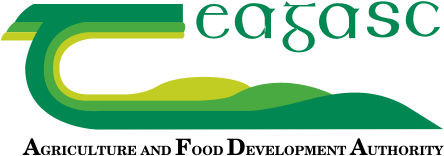New Newford Farm Update
New Newford Farm Update 16 October 2024 Type Media Article By Peter Higgins, B&T Drystock Adviser, Teagasc Galway/Clare Newford farm is a suckler to beef demonstration farm and is a joint Programme led by Teagasc, Dawn Meats and McDonalds. It was previously positioned beside the Mellows Campus or the Teagasc Athenry farm on lands leased […]
By By Peter Higgins, B&T Drystock Adviser, Teagasc Galway/Clare
New Newford Farm Update
Type Media Article
By Peter Higgins, B&T Drystock Adviser, Teagasc Galway/Clare
Newford farm is a suckler to beef demonstration farm and is a joint Programme led by Teagasc, Dawn Meats and McDonalds. It was previously positioned beside the Mellows Campus or the Teagasc Athenry farm on lands leased from the IDA. With planning submitted by Dexcom (the title sponsors of Connacht Rugby’s stadium) to build a new manufacturing facility on the outskirts of Athenry, Newford Farm sought out a home for its herd of Angus/Hereford x Friesian cows. An active client of Teagasc who sought to wind down his beef finishing enterprise to focus on alternative business interests was approached by the Newford Farm board members to discuss the potential research farm idea. The agreement quickly progressed with the new Newford Farm now being located in Scrine, Co. Roscommon.
The farm is based over two holdings, the home farm being the Newford research unit, while Neilan’s farm will power a finishing unit of 180 cattle. This is a separate farm leased for 7 years and will be used to run separate research initiatives. Both farms combined span a large holding of ground with Newford claiming 72.4ha. (179Ac.) and Neilan’s farm claiming 19.26ha. (47.5Ac.). The demonstration farm aims to be a shop window to the public farming sector on how to run an intensive yet environmentally sustainable and profitable suckler farm.
This year’s stock numbers account for 86 suckler cows, 23 heifers, 39 bullocks, 44 beef heifers, 8 non-suckler heifers, 85 suckler calves and 21 replacement calves. This will amount to a stocking rate of 2.85LU/Ha. This substantial workload managed by Stephen Frend who is accompanied by part time staff and students at peak times of the year. As manager of the original farm, he has a number of years of experience under his belt working with the stakeholders.
Targets that the national herd should tighten up on to improve profitability and reduce workload are stats on show here. For example the first calf born this year was born on 29th of January with the last born on the 15th of April. This is a calving window of 78 days, a fantastic feat considering the number of calvings and is actually longer than other years in Athenry. Mortality was minimised this spring with three dying as a result of stillbirths or shortly after birth. Only one calf passed at 2 weeks of age, which shows you are never out of the woods until they are out of this danger period of 28 days.
How to get on top of your calving workload starts with getting out into the field with a note pad and recording heats 9 months before you ever spend a night shift in the calving pen. Consider teaser bulls equipped with chin balls to help ease the workload and make the spotting of heats easier. The breeding season on Newford this year lasted 6.5 weeks (22nd April – 1st July). The 3 teasers employed weighed 406kg at a cost of €1,015 each. The breeding season started 4 days after the cows went to grass so you should be picturing how these significant windows of the farming calendar can fit together in your own mind.
Newford’s 2024 breeding criteria included picking 5 star terminal index bulls with less than 5.1% calving difficulty, greater than 68% calving reliability on all mature and young cows. As farming becomes more of a part time occupation across the suckler sector you can see why driving your breeding plans down this route will pay dividends. The cost of each straw was €20 and it helped deliver over 1.95 on confirmation and over 25kg on predicted carcass weight. Bulls picked were all Charolais and Limousin.
Again, when picking replacements Newford fixated on a replacement index figure of €150 and upwards, age of finishing (-6 days), calving difficulty and interval. Everything you would look for in a high performing athlete of a suckler cow.
A performance summary was carried out and bullocks were born at 47kg on average and weighed in at 592kg at 19 months of age equates to an average daily gain of 0.94kg/day. Heifers were not far behind at 0.87kg/day. Considering that meal feeding started on the 26th of August.
Bullocks consistently killed out at R= on a fat score of 2+ on a 365kg carcass (growing every year) at only 21.5 months, paying out €1,905 or €5.22/kg. From data gathered over the last number of years of the same trial it has been shows that the fat score is decreasing on average while the carcass weight is increasing. Age of slaughter increased on last year by a month but considering the weather we faced we will allow for this.
All of these figures are not achievable without first and foremost investing in your farms soil fertility. Intensive farms should be aiming for a soil Ph of 6.3 and aiming for nearly 7 on farms which are growing red clover silage to encourage its persistence. Phosphorus and
Potassium should both be reading index 3 or 4. Little by little any suckler farm can achieve these results, by implementing the correct Nutrient Management Plan.
If you are involved in a discussion group with farmers that are finishing cattle we encourage you to visit Newford and subscribe to the Newford farm eNewsletter. For more detailed beef discussion, tune into The Beef Edge podcast.
